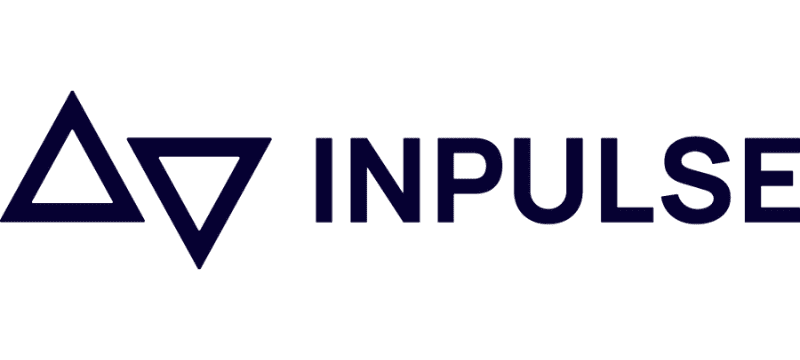Retaining your best people with Emotional Analytics
Understand how to turn abstract concepts such as belonging, connection, and purpose, as well as employee emotions, into measurable and actionable datasets.
Get the latest on how to understand your own recruitment and retention landscape, what it's like at your organization, and where emotion plays a role.
Find out about how to better equip your people managers for success, how to implement findings from ‘emotion datasets’ and use that to create organizational action plans.



With many businesses still struggling to get, and keep, the talent they need – organizations have to bear associated high costs if they don’t succeed in these areas – UNLEASH shares a unique way of coming at an issue that is vexing many people and talent attraction functions.
In conjunction with Matt Stephens, Coach and Founder at Inpulse, and Paula Leach, Director of Consultancy, Inpulse – was former Chief People Officer at UK Home Office and FDM Group – Jon Kennard, Editorial Content Manager leads a discussion of the role that emotions play in retention, and how getting a better understanding of this area through the use of data and analytics can deliver on the talent agenda. The sessions cover how to get business buy-in and equip people managers for success; what to look for and how to act on data-led insights around emotion; and how to instill a clear purpose and belonging-driven methodology for the future.
Watch on-demand to:
- See the latest research headlines on why employees want to leave and what emotions and reasons you should look out for if you want to understand this key area
- Understand how to turn ‘emotional insights’ into practical talent strategy actions
- Get the latest insights on what things HR needs to do to curate culture and experience of work that drives positive emotions amongst its people
How do we touch the emotional side of people that it becomes a useful part of their [workplace] social connection landscape?
Paula Leach, Director of Consultancy, Inpulse
Understanding what makes people leave
The webinar kicked off with headlines from the latest Inpulse research into what’s driving people to leave jobs. Here, there are two clear trends: lack of opportunity and development which sits alongside negative line manager relationships. This, Stephens added, is an issue is many organizations know to be true but don’t know how to solve. At the crux of it, is that negative experiences in these two areas then drive negative feelings in employees: then when they don’t get the experiences that they want, either from the way they’re managed or how they are progressing in their careers or skills cache, it can result in hampered performance and an impulse to head for the door.
This, with headlines around the Great Resignation in full flow, is something that many organizations are currently experiencing. Huge numbers of employees are leaving and there is no quick fix. Worryingly, according to Inpulse data, many employees are still plotting their escape routes: more than one in 10, according to their statistics. A massive problem for affected businesses.
Underpinning these trends, like the huge number of employees leaving, is how employees feel, Leach explained. This, she argued, is borne out in Inpulse research which shows there is a clear correlation between engagement, negative emotions, and the wish to leave the company. Obviously, HR will want to know what these negative emotions to watch out for are. Here, it needs to be aware of disconnection, irritation, and anxiety. As Leach added, this can drive a fight or flight mode in employees which can result in them taking action i.e. looking for other jobs.
Spotting these negative emotions can result in a positive, Stephens argued, if it then translates into an understanding of why people want to leave, giving HR a clear indication of where it can focus on to get them to stay.
Emotional analytics in action
For HR, there is an obvious follow on question: what does all this talk of employee emotion mean for our strategy? Well, riffing off Inpulse’s data, Stephens laid out that if employees start to showcase some of the above emotions there is a high chance they will leave in the next six months. It gives HR the chance to try and rectify this with actions to make them feel what engaged and happy-to-stay employees often feel: pride, inclusion, like their career, will develop, that they have good work-life balance, are valued; and are committed and motivated. This is emotional analytics with a practical outcome.
Stephens highlighted a few areas where the people function might start to think about improving outcomes, such as in areas such as development, workload, wellbeing, and a focus on creating cultures that allow people to be themselves. They might also want to think about flexibility and recognition. As Stephens clearly laid out in the webinar, this is a way of linking clearly employee feelings, through data, into insight and then actionable HR outcomes.
How can HR improve their organizations using ’emotional’ data?
In the webinar Leach explained that the above approach can translate into HR helping to make employees who feel negative emotions feel valued, like they belong, and safe. Whilst these are abstract concepts, Leach added that these come about through usual HR foci: working on inclusion activities, finding the right workload balance, and wellbeing initiatives, such as others.
She also suggested a core part of the focus – considering the reasons that people leave organizations – could also be on the relationship an individual has with their manager, something which can inspire, change and build trust if enacted in the right way. Additionally, if managers are more engaged and are full of positive emotion it had a big impact on their teams. Something for HR to think about if it is interested in measuring emotion and creating strategies for people success off the back of it.
HR can also get quicker wins by focussing on those who are conflicted about their employer: who have some positive and some negative emotions about the organization. Here, if HR can conceive of the way they connect with employees, by understanding it’s not just about information and work exchange but is a very human exchange, they might get better human outcomes, too.
Of course, this is made more complicated with the advent of widespread hybrid work as it changes how social and emotional exchanges are undertaken. Here, HR has to think proactively about creating structures of work that are adapted to, as Stephens explained, wanting to create excellent social and emotional experiences. Something which the function should always be trying to do regardless.
Yet, it appears HR might not have too far to go to make this leap. Leach explained that research shows that some good things to focus on, that can drive good outcomes, in the talent landscape and are things that are increasingly top agenda points anyway: making the culture one of unconditional positive regard, sharing vulnerability, changing how the business listens and reflecting in a better manner. Whilst HR might worry that it isn’t set up for emotional analytics just yet, it’s probably a good chunk of the way there.
